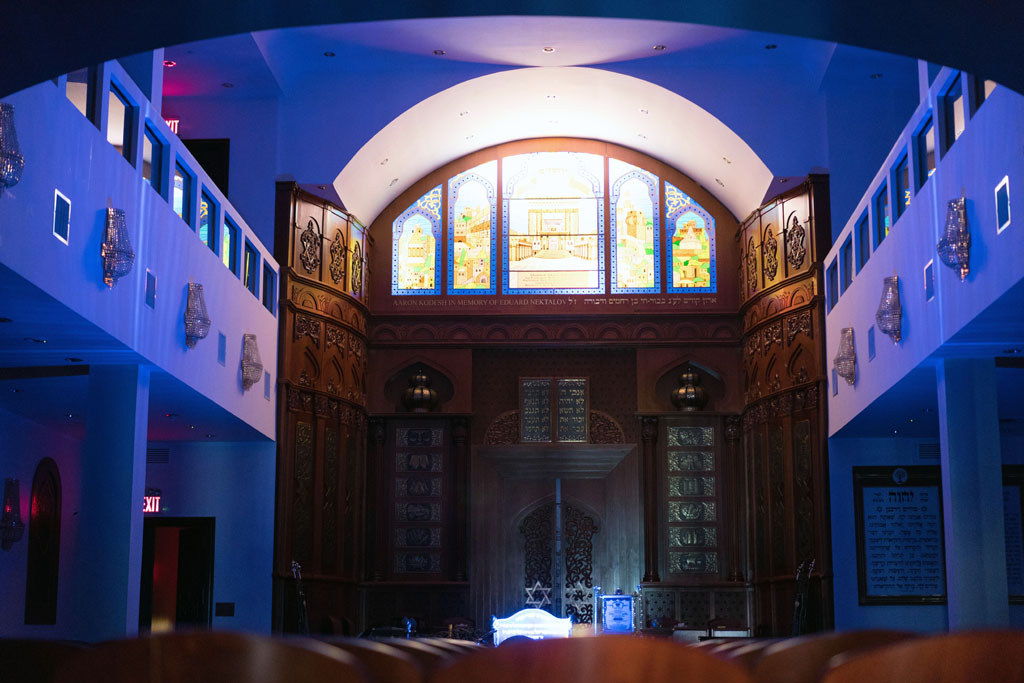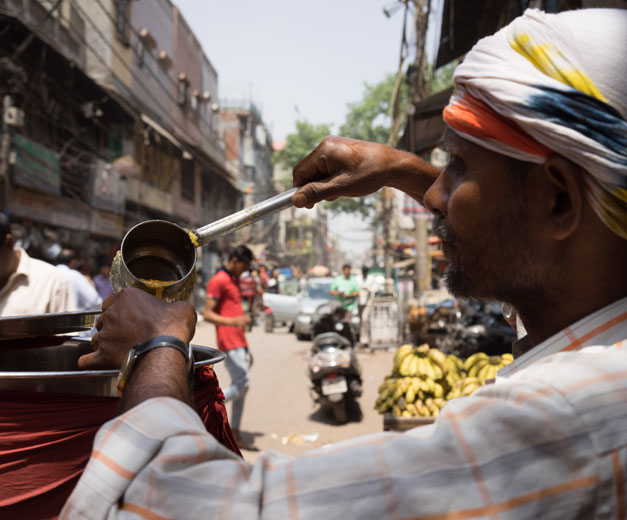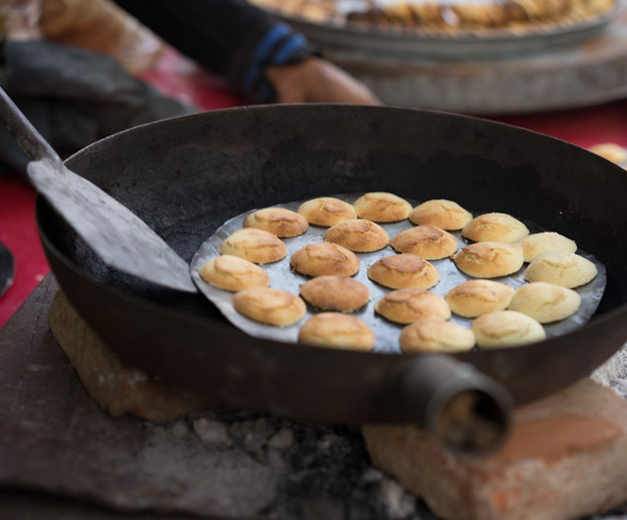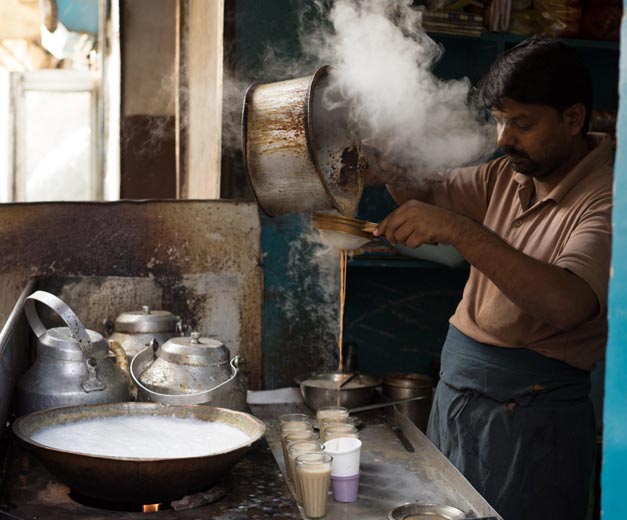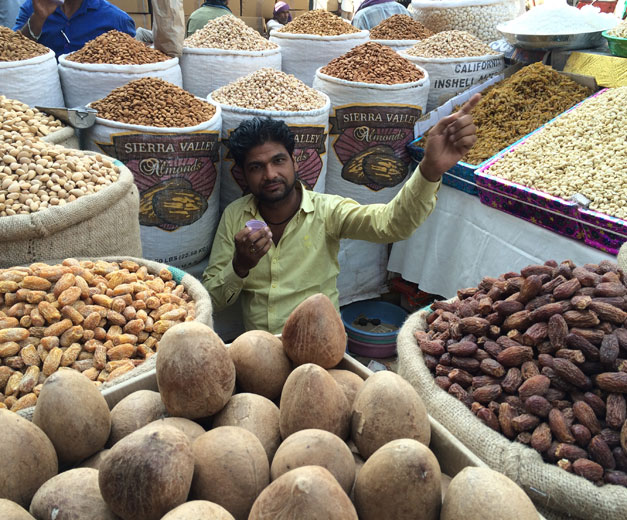We can't find the internet
Attempting to reconnect
Something went wrong!
Hang in there while we get back on track
Search results for "Sarah Khan"
Queens
Northward Bound: African-Americans in Queens, part 1
Enslaved Africans first stepped onto North American soil in 1619, unloaded by the Dutch West Indian Company in Jamestown, Virginia. Colonists first auctioned enslaved Africans in New Amsterdam (now New York City), New York, in 1626. According to the New York Historical Society, during the colonial period, 41 percent of the city's households had enslaved peoples, compared to 6 percent in Philadelphia and 2 percent in Boston. Only Charleston, South Carolina, rivaled New York in the degree to which slavery entered everyday life. By 1756, enslaved Africans made up about 25 percent of the populations of Kings, Queens, Richmond, New York and Westchester counties, says historian Douglas Harper. Because of a longer and colder winter, the lives of Queens County and Long Island slaves differed from those of their southern counterparts.
Read moreQueens
How the World Came to Queens
The story of how Queens transformed into a microcosm of the world’s cuisines is just as fascinating and important as those of the cuisines’ creators. The borough is one of the most diverse places on the planet, with over 120 countries represented and 135 languages officially spoken in the public school system. The cause? The Immigration and Nationality Act of 1965. From the Colonial period to the early 20th century, immigrants to the U.S. were mainly northern Europeans. Soon after the Immigration Act of 1924 passed, a national origins quota system dictated migration patterns. The Act allowed unlimited northern European entry, limited southern Europeans with quotas and excluded Asians, Africans, Hawaiians, Puerto Ricans and Alaskans.
Read moreWorldwide
Street Carts of Desire: The Tamale Ladies of Roosevelt Avenue
(Editor's Note: The ill anti-immigrant and -refugee wind blowing out of the White House in Washington, DC, does not represent the America we know, nor does it speak to our experience exploring the world’s culinary backstreets. The cities and countries where we work – the United States included – have always been havens for those looking for a better, safer place. All have come with their food, making their new home a truly better place for us all and becoming an indispensible part of its fabric in the process. In their honor, this week we are running some of our favorite archived stories of immigrants and refugees who have left a culinary mark on their adopted land.) If you walk the length of Roosevelt Avenue from 69th Street to 111th Street in the early morning, you may encounter up to two dozen tamale ladies, usually at the major intersections that correspond to the 7 train’s stops.
Read moreWorldwide
Street Carts of Desire: Taking It to the Streets
To organize for your right to vend is not glamorous; it involves community and trust-building, meetings, disagreements, unification around a campaign, administrative quagmires and persistence. This is what a small group of Latino vendors in Corona, Queens decided to take on. “I get too many tickets because of the ’20 feet rule’ or the ‘10 feet rule’ for vending too close to a business or crosswalk,” said a Latina street vendor. “The rules are unfair and confusing,” she added in Spanish. She was new to the monthly street vendor meetings in Corona. The more seasoned members, like Rosario, explained her vending rights. Rosario sells a few types of Ecuadorian ceviche with her partner, Jorge, on 111th Street.
Read moreWorldwide
Street Carts of Desire: Évelia's Courageous Tamales (Video)
Évelia, who sells tamales at the intersection of Junction Boulevard and Roosevelt Avenue in Queens, began with a grocery cart and no permit. Her story is a typical one. She arrived from Mexico in 2000. “When they arrested me [for operating without a permit], I really felt horrible,” she says. “I cried. But I had this courage inside. I decided to sell the next day.” After harassment from police, more arrests, obtaining black-market permits and contending with angry restaurant owners, she can finally sell her tamales legally. The video below tells her story, in her own words.
Read moreWorldwide
Queens' Street Carts of Desire: The Vendors vs. City Hall
“The people with permits, they are not working. We vendors on the streets, we need more permits,” yelled Mehdi, a New York street vendor of Bengali origin, at a recent protest for more permits. Street vending in the city – in particular food vending – is largely the domain of immigrants like Mehdi, seemingly an easy way to start earning an income. But selling food from a street cart is no easy ride. Sean Basinski, Director of the Street Vendor Project, which advocates on behalf of street-based sellers, says food vendor licenses are relatively easy and inexpensive to acquire. There is no cap on the number of food licenses issued. There’s a catch, though.
Read moreWorldwide
Queens' Street Carts of Desire: Peddling, Past and Present
Queens these days is New York’s street cart central. According to the Street Vendor Project, which advocates for vendor rights in the five boroughs, the largest concentration of street vendors with licenses lives in that borough. This concentration of streetside sellers is easy enough to see on six-mile-long Roosevelt Avenue, which runs through six of Queens’ most ethnically diverse neighborhoods with a dizzying assortment of vendors catering to almost every taste and nationality, depending on the time of day. It’s not always easy work. At a recent monthly meeting of street vendors in Corona, Queens, the air was thick with grievances about the conditions they have to work under.
Read moreWorldwide
Queens' Street Carts of Desire: Saboroso de Aracataca
"Me siento latinoamericano de cualquier país, pero sin renunciar nunca a la nostalgia de mi tierra: Aracataca…” “I feel Latin American from any country, but without renouncing the nostalgia for my land: Aracataca…” ~Gabriel Garcia Marquez Most are animated, some waver and occasionally one stumbles. Every few feet, a door swings open and a bolero, salsa or merengue tune blares from within. It’s Saturday night in Jackson Heights, and up and down Roosevelt Avenue families flow, children beg their parents for sweets, young women gossip and others hop from bar to bar. In the midst of the hustle and bustle works Luis Alfonso Marin, a Colombian immigrant who sells butter-laden, mozzarella-stuffed arepas topped with grated white cheese from his cart at the corner of Roosevelt Avenue and 80th Street.
Read moreWorldwide
Queens: The Promised Land, Pt. 3
Rego Park and Forest Hills are home to much of Queens’ Central Asian Jewish diaspora. The neighborhoods comprise two main thoroughfares, 63rd Avenue (which changes to 63rd Street) and 108th Street. Both roads have a range of markets, restaurants and bakeries catering to local tastes. Here are a few notable addresses. Queens Gourmet Bazaar Food Brothers Yusuf and Juda Saz run this long, narrow market that is filled with Persian staples. Mini barrels of nuts, seeds, dried fruits, several Samarkand raisin varieties as well as fruit molasses, barberries, and other provisions in cans and glass jars cover the floor and walls. The brothers make some of the ready-made food in-house.
Read moreQueens
Queens: The Promised Land, Pt. 2
For those interested in visiting Tashkent or Samarkand, an easier trip might involve heading to the Rego Park and Forest Hills neighborhoods of Queens, home to much of the borough’s Central Asian Jewish diaspora. The neighborhoods comprise two main thoroughfares: 63rd Avenue, which changes to 63rd Street, and 108th Street. Both roads have a range of markets, restaurants and bakeries that serve local tastes and evoke places left behind. On one recent afternoon, I walked west on 63rd Avenue, away from Queens Boulevard, passing Public School 139 Rego Park, where parents and grandparents spoke Tajik, Mandarin, Arabic, Uzbek and Russian, crowding the street as they await their children’s dismissal from school.
Read moreQueens
Queens: The Promised Land, Pt. 1
In 1654, Dutch refugees, including 23 Jews, traveling on a French ship from Brazil, arrived in North America. The refugees set foot in Peter Stuyvesant’s New Amsterdam village, now called New York. Stuyvesant did not want to accept Jews, so he imposed trade, property and tax restrictions to stifle their advancement. Most of the Jewish community consequently returned to Amsterdam or left for the Caribbean, where they could live under more hospitable conditions with relatives. When Stuyvesant ultimately ceded control of New Amsterdam to the English, the small Jewish community that had remained swore allegiance to its new rulers and began to grow.
Read moreWorldwide
Northward Bound: African-Americans in Queens, part 2
The 20th century saw millions of African-Americans leave the South for cities in the North in what is called the Great Migration. And with them, they brought their food traditions, and they opened eateries and groceries and other businesses to serve these rapidly expanding communities. In Queens, African-Americans settled in Flushing, Corona and Jamaica. Today, even with the influx of many new immigrants in recent years, Jamaica continues to be home to many African-Americans. Byron Lewis, an African-American pioneer in multicultural advertising and founder of UniWorld Group, grew up in Queens. His parents’ families both traveled from the South during the Great Migration, ultimately settling in South Jamaica, where Byron, the oldest of six, his parents and grandmother lived on Pinegrove Street from the 1930s on.
Read moreQueens
Queens Drive-Thru: The Negro Motorist Green Book
Our monthly series on migrant kitchens in Queens, NY, told through interviews, photos, maps and short films, takes us next to stories about the migration African-Americans to the borough. In the accompanying video, we look at the fascinating history of The Green Book, which between the 1930's and 60's provided African American travelers with a guide to hotels, restaurants, taverns, road houses, gas stations and homes where they could be sure to have a place to eat and rest without the threat of violence.
Read moreQueens
Introducing "Queens Migrant Kitchens"
Culinary Backstreets presents a year-long monthly series of stories on migrant kitchens from the world’s most diverse place – Queens, NY. Through interviews, photos, maps and short films, the Migrant Kitchens Project will share not only what challenges and joys immigrants face as they create their new home but also how they strengthen the city.
Read moreElsewhere
Crunchy Snacks and Hot Tea: Winter in Old Delhi
The official cold blew in last month. Winds pierced thick cotton clothing through to the skin, into the body and further into the bone while we were driving in the open rickshaw, after the sun slipped down. Then it rained and thundered, the kind that makes one jump with the clap. When the morning air hit the airways, balminess laced with pollution infiltrated the atmosphere. To get and stay warm is work here. We seek out the afternoon sun to heat our bodies and dry our clothes. Another way to keep the chills at bay is to ensure a supply of dense foods and hot liquids.
Read moreElsewhere
Autumn in Old Delhi: Spices, Porters and Local Fare
Though the summer intensity has passed in North India, a glimmer of cooler mornings awaits, on the sidelines of Old Delhi. Dust never settles, it just gets redistributed and then the heat lacquers every surface. Each corner of this ancient city is coated with infinite layers: strata of memories, migrants, languages, castes, foods, architectures, monumental and streetside mandirs and masjids. Even sounds and smells alight upon or crash against ears and noses.
Read more










